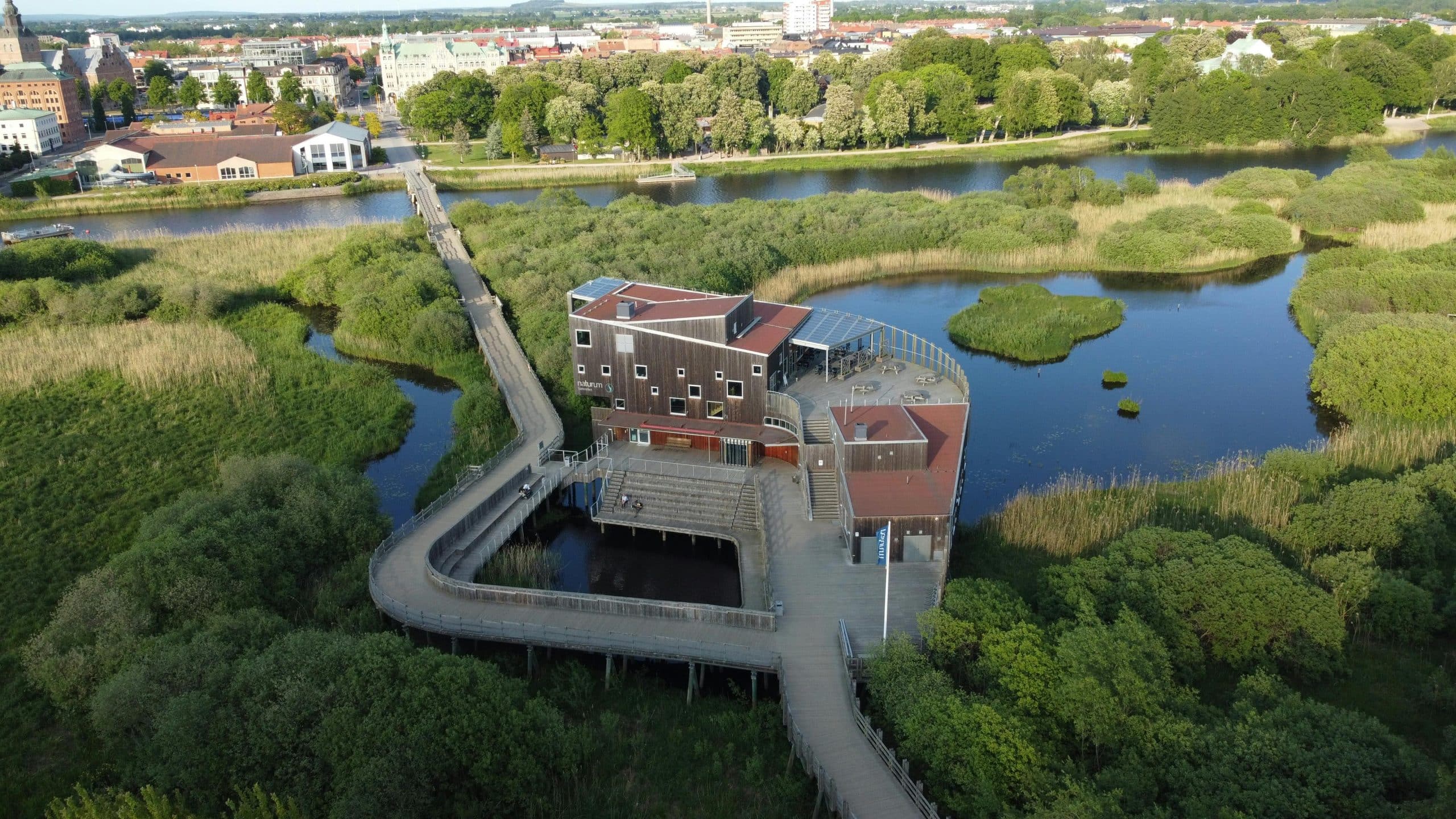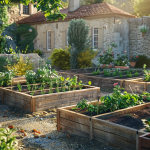The concept of green roofs isn’t new to the urban landscape. In the context of an increasingly urbanized world, these engineered ecosystems, complete with a variety of plant species and all the wildlife they attract, offer a host of benefits. However, a more ecological approach has emerged: the brown roof design. This article seeks to explore this concept and how property developers can utilize them to enhance urban biodiversity.
The Power of Brown Roofs
Brown roofs differ from green ones in the focus of their design. While green roofs use a variety of plants, brown roofs are specifically designed to mimic the natural habitat of the location, often including local soil and rubble in their construction. This design choice encourages the colonization of native species, enhancing local biodiversity.
En parallèle : What Are the Prospects for Real Estate Growth Around new HS2 Stations?
The idea behind this approach is to replace the habitats that have been lost due to urban development. When you consider the footprint of a building in a city environment, it can significantly reduce the available habitat for local species. A brown roof is a way to mitigate this, offering a new home for a variety of organisms.
The Benefits of Brown Roofs
The benefits of brown roofs extend beyond simple biodiversity. They also offer a range of additional advantages that should be of interest to property developers. Let’s review the reasons why these systems are a valuable addition to urban projects.
A lire aussi : How to Integrate Smart Water Meters in Multi-family Residential Buildings?
Firstly, brown roofs contribute to water management. By absorbing rainfall, they reduce the amount of water that ends up in the city’s drainage system. This is particularly important in urban areas where the capacity of the drainage system can be overwhelmed during heavy rain.
Secondly, brown roofs can provide a cooling effect, reducing the urban heat island effect. This is a significant issue in cities where the concentration of buildings and human activity can lead to higher temperatures than in surrounding rural areas.
Lastly, brown roofs can improve the aesthetic of urban buildings. They can add texture and colour, breaking up the monotony of urban grey and offering visually pleasing green spaces within the cityscape.
Design and Management of Brown Roofs
The design and management of brown roofs are critical factors in their success. Before installing a brown roof, it is fundamental to conduct a thorough site analysis. This includes understanding the local microclimate, soil type, and native plant and animal species.
The design should aim to mimic the local habitat as closely as possible. This means including a variety of different materials and plants, to provide a range of habitats for different species. A successful brown roof is not just about plants, but also about providing homes for insects, birds and other animals.
Management is another key aspect of brown roof systems. Unlike green roofs, which are often intensively managed, brown roofs are designed to be low-maintenance. They should require minimal intervention, with the aim of allowing the roof to develop naturally over time.
Implementing Brown Roofs: A Scholarly Review
To gain a more comprehensive understanding of the benefits and implementation of brown roofs, one can refer to literature from reputable sources such as Google Scholar and Crossref. Numerous studies highlight the notable improvements in urban biodiversity resulting from the use of brown roof systems.
For instance, a study published in Urban Ecosystems Journal discovered that brown roofs can support more diverse plant species compared to traditional green roofs. This is due to the use of local substrates which naturally attract native flora and fauna.
Another study in the Journal of Environmental Management highlighted the significant role of brown roofs in stormwater management. They discovered that the use of brown roofs could lead to a 50% reduction in runoff volume, a remarkable finding considering the issues of urban flooding in many cities.
Thus, these scholarly resources offer valuable insights to property developers considering the adoption of brown roof systems.
Brown Roofs: The Future of Urban Development
As the planet continues to urbanize, the need for solutions that support biodiversity and provide other environmental benefits is increasingly paramount. Brown roofs offer a compelling solution to this challenge, providing a range of benefits from water management to cooling effects, and above all, enhancing biodiversity.
For property developers, the incorporation of brown roofs into urban projects represents not only an eco-friendly decision but also an investment in the property’s long-term value. These systems provide a distinctive selling point for buildings, setting them apart in a competitive market, and responding to a growing demand for more sustainable urban living solutions.
With the right design and management, brown roofs can become a vibrant, living part of the urban fabric. They offer a glimpse of a future where cities can be not just places for people to live, work and play, but also havens for nature.
Application of Brown Roofs: Real-World Examples
Applying the concept of brown roofs in practical scenarios often gives a better understanding of its benefits and challenges. Various developers worldwide have already incorporated this concept into their projects, and their experiences offer valuable insights.
One of the most notable examples is the Queen Elizabeth Olympic Park in London. The park’s buildings are designed with brown roofs to replicate the site’s original habitats. This pioneering project has been a success, attracting a variety of species, from wildflowers to beetles and butterflies. What’s even more remarkable is, these species were seldom sighted in the London area before the implementation of these roofs.
Similarly, the Toronto City Hall’s green roof was redeveloped into a brown roof, resulting in a significant increase in native plant and bird species. The redevelopment involved replacing non-native plant species with local ones and creating varied micro-habitats using different soil depths and textures.
These examples signify the potential of brown roofs in fostering urban biodiversity. They also indicate that the successful application of brown roofs isn’t just about the initial design and installation; it also involves ongoing monitoring and occasional intervention to ensure the ecosystem’s health and diversity.
The Role of Brown Roofs in Climate Change Mitigation
As we advance further into the 21st century, the threat of climate change becomes ever more prevalent. The role of green infrastructure, including brown roofs, in mitigating these effects is increasingly recognised.
Brown roofs can contribute to climate change mitigation in several ways. Firstly, by absorbing carbon dioxide, a principal greenhouse gas, the vegetation on brown roofs helps reduce the overall carbon levels in the atmosphere. Secondly, the cooling effect of these roofs can significantly reduce energy consumption in buildings, thereby reducing their carbon footprint.
Moreover, brown roofs can also play a role in climate change adaptation. They can act as buffers in extreme weather conditions by absorbing excess rainwater, thereby reducing flood risks, and provide cooling during heatwaves.
For property developers, these climate change-related benefits of brown roofs add to their attractiveness. These roofs are not just a means to attain net gain in biodiversity, but also a tool for tackling the pressing global issue of climate change.
Conclusion: Brown Roofs – An Essential Element of Urban Green Infrastructure
The adoption of brown roofs in urban development has emerged as a promising solution to the dual challenge of urban biodiversity loss and climate change. By imitating local habitats, they enhance biodiversity at the ground level and above, facilitating the growth of native plant species and creating homes for a variety of organisms.
From a property developer’s perspective, brown roofs can offer a unique selling point, contribute to green spaces in urban areas, and enhance a building’s sustainability credentials. This is particularly relevant in today’s market, where there is a growing demand for eco-friendly living solutions.
However, the successful implementation of brown roofs requires careful planning, design, and management. It is essential to carry out a detailed site analysis, understand the local microclimate, and choose appropriate materials and plant species. Ongoing monitoring and occasional intervention may also be necessary to ensure the health and diversity of the brown roof ecosystem.
To conclude, brown roofs have the potential to be an essential part of the urban green infrastructure, alongside elements like constructed wetlands, green walls, and extensive roofs. As urbanization continues and the effects of climate change intensify, the value of these eco-friendly solutions will increasingly come to the fore.






